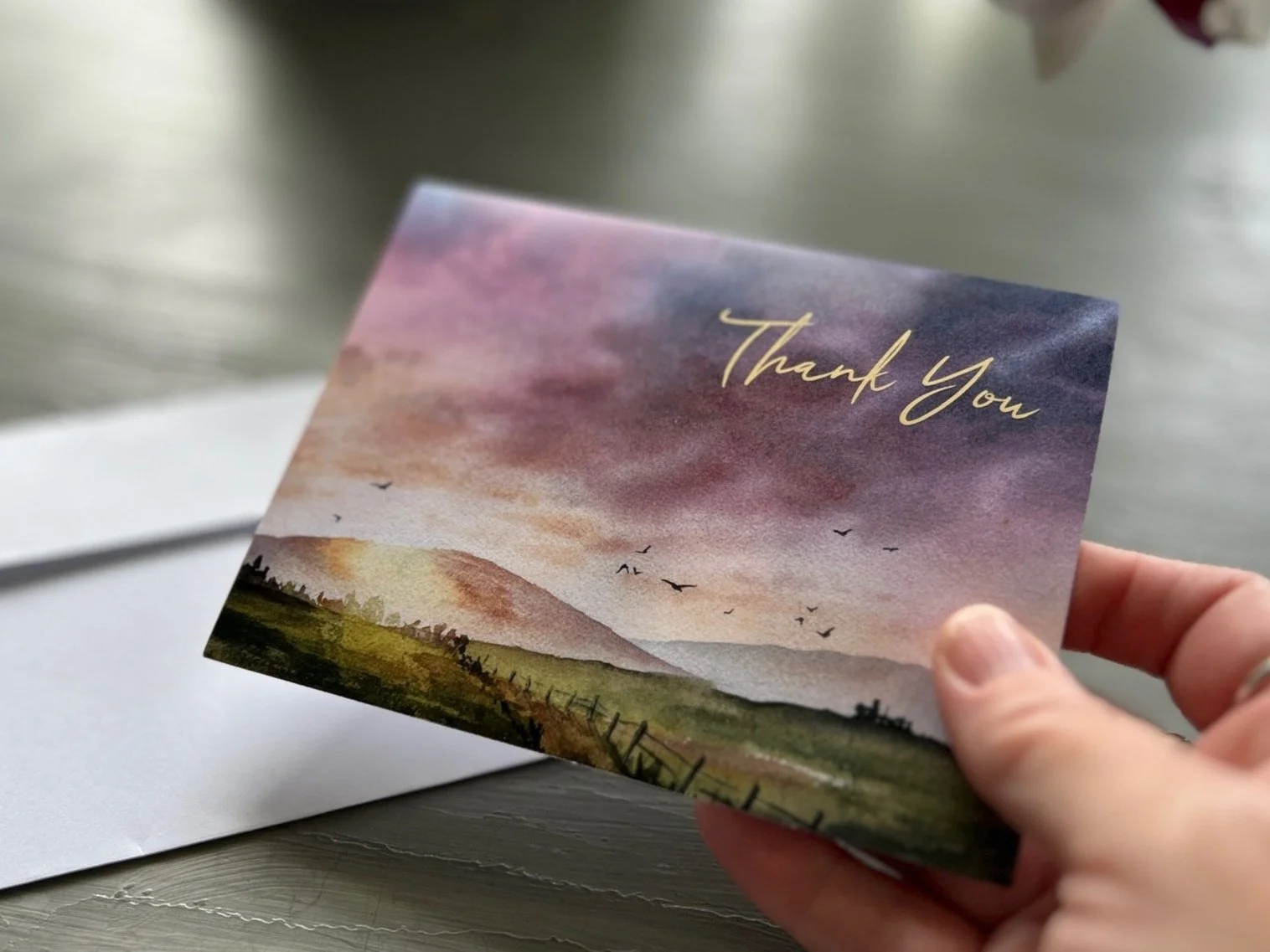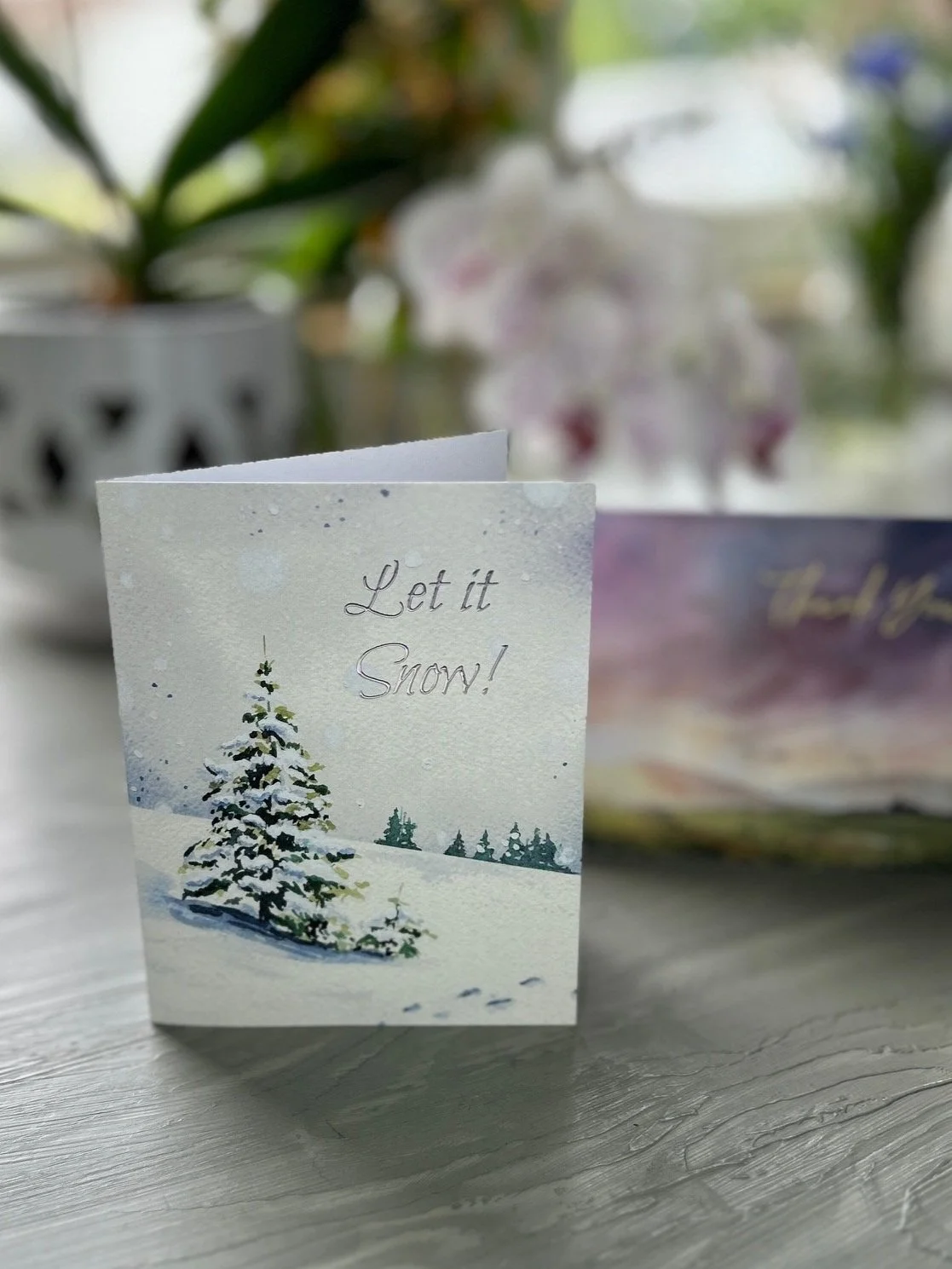Handwritten notes in the age of electronics
It is one of life’s little joys to retrieve the mail from your mailbox and find a personal note or greeting card from a friend, and I especially love it when I find a uniquely designed card inside. In a world where we are inundated with mass produced items, with bills and ads and various other “junk,” and one where we can so easily communicate electronically via several methods, I for sure get a little thrill each time I see an envelope like this in the snail-mailbox.
Someone put forth that extra effort to address, stamp, and hand write a note to me personally. It feels super special in a way that I don’t think it has in the past. This thoughtful person could have grabbed their phone and sent me a quick text or email or even threw up a terse social media post, and don’t get me wrong, those are wonderfully efficient and effective means of communication. Instead, this special soul chose to share a little of themselves in this correspondence.
The ink color.
The stamp.
The card itself.
The handwriting that that gives me a little glimpse into their heart and personality. (I remember being very conscious of how my handwriting looked when I was young and so many more things were handwritten. It has since devolved into a mash-up of print and cursive so that when I’m giving a greeting card I need to concentrate to make sure the recipient can read it.)
I often prefer a card that’s left blank on the inside so I can add my own thoughts or sentiments. This past holiday season I opted to include print on the inside, and I think they were lovingly received. I love cards that aren’t holiday specific too, because they can be used at any time, no matter the occasion. How did you feel the last time you received a physical, personal card or letter in the mail?
You can find several greeting card sets designed from my original paintings here in my shop. Happy writing!!
Accepted!
Poppy, Yarrow, and Sweet Pea has been accepted to the d’Art Center group exhibition “Flourish” which is a nationally juried exhibition featuring floral and botanical artworks.
These particular flowers, which are often found wild, speak to me about the beauty of resilience and the perseverance of nature. No matter what nature throws at them they keep on keeping on, which is something I think we can all relate to. I love the poppy and similar wildflowers so much they are tattooed on my arm!
For this open art call they received 737 submissions from 207 artists in 35 states. They selected JUST 68 pieces from 59 artists and 23 states. I am so honored to be among them.
The show runs from April 19-May 24 and the opening reception is Friday, April 25, 5:30p-7:30p.
Tube paint VS Pan Paint
I get asked this question often when I’m painting in public, so let me give you the lowdown on the different options.
This might not be a common opinion, but I really don’t have a strong preference for one or the other. There are pros and cons for both.
Remember when you were a kid, and you went to art class and your teacher gave you some crisp white paper and a brush to wield you and opened that big, bright tray of Crayola colors? That’s watercolor pan paint. While the smooth, bright primary Crayola colors are what we all typically tend to think of, we also have some “grown-up” choices available to us.
Pros of pan paints:
They come already neatly packaged.
Pan paints often showcase fun and unusual colors.
Cons:
Sometimes they can be a little “chalky” in texture.
I find they are not always as pigmented as I would like.
Tube paints are exactly what they sound like: little metal tubes of concentrated liquid watercolor pigment. There are several ways to use it such as squeezing your desired amount of pigment onto a palette (preferably ceramic) and using “straight from the tube” while the paint is still wet.
The way I most often use them, however, is to buy an empty metal palette and pans and squeeze the paint (kinda haphazardly, I don’t bother trying to smooth the paint out like some do, but I do write the paint colors on the side of the pans in case I forget) into the empty pans. You then allow them to dry and voila! You have your own custom set of paints colors that are easily reconstituted with water.
Pros of tube paint:
Straight from the tube, they are more pigmented and saturated.
Usually sold in a larger quantity per color.
You can create custom palettes.
The color names can be written on the pans to help keep track.
Cons:
Does not come in a neat little package like most pan paints. There is a little prep required.
Can be pricier if you are using professional level pigments.
So, I love pan paints for the uniquely curated color sets options and tube paints for the saturation, pigment, and the ability to customize my palette. Whichever you choose, the important thing is to just do it. Don’t let fear of the blank page keep you from creating, there is no wrong way to do it.
Happy painting!
Supplies used:












